07.04.2022
Can cats eat crisps? Your guide to healthy cat snacking
We all like to indulge ourselves with crisps every so often, and sharing is caring.
The temptation to supplement your cat’s diet with snacks like crisps is strong, particularly when your kitty is pestering you and headbutting your leg.
Can cats eat crisps, though? Read on to find out whether giving your kitty the same snacks you enjoy is a good idea.
Should I feed crisps to my cat?
However good they taste, crisps are not healthy for either you or your cat. Crisps are a nutritionist’s nightmare, a 25-gram bag containing on average:
|
Food groups |
Nutritional values |
|
Total fat |
8.5 grams |
|
Saturated fat |
0.8 grams |
|
Polyunsaturated fat |
2.1 grams |
|
Monounsaturated fat |
4.7 grams |
|
Salt |
0.3 grams |
|
Potassium |
0.3 grams |
|
Carbohydrates |
13.4 grams |
|
Vegetable protein |
1.6 grams |
Humans can eat a bag of crisps without suffering any immediate consequences, but you should remember that:
- Cats are considerably smaller than humans—The average cat weighs around 4.5 kilograms, so about 5% of an average male human. While some felines—particularly Maine Coons, Persians, Ragdolls, neutered toms, and many indoor cats—can reach up to 8 kg as adults, many breeds, including Siamese, Bengal, and many shorthair varieties are tiny, averaging around 3–3.5 kg. Whatever your cat eats, the portion size needs to be appropriate for the body weight. A handful of crisps could easily be too much
- Human nutrition and cat nutrition are different—While humans are considered omnivores, cats have different requirements. With their low vitamin content and high levels of minerals, eating crisps provides too little of one but far too much of the other
Which vitamins do cats need?
Cats can synthesise vitamins C and K but need to ingest sufficient quantities of vitamins A, B-complex, D, and E. The best sources of these for a cat are:
|
Vitamin type |
Sources |
|
Vitamin A |
|
|
Vitamin B complex |
|
|
Vitamin D |
|
|
Vitamin E |
|
None of these are contained in crisps.
What are cats’ mineral requirements?
The minerals cats need are:
- Calcium
- Phosphorous
- Potassium
- Magnesium
- Iron
- Copper
- Manganese
- Zinc
- Iodine
- Selenium
While all of them are essential, cats only need small amounts of each mineral. The most important minerals to look at if your cat regularly eats crisps are sodium and potassium. Of these two, an average cat shouldn’t get more than the following amounts per day:
|
Mineral |
Recommended daily intake |
|
Sodium |
21 milligrams |
|
Potassium |
330 milligrams |
Both these minerals are normally in your cat’s regular food in the correct amounts.
As a small bag of crisps contains around 300 milligrams of both these minerals, eating crisps could rapidly wreck the mineral balance your feline needs to stay healthy.
Too much sodium can cause hypernatremia or an electrolyte imbalance in the blood. This can have serious consequences as many of your cat’s bodily functions rely on electrolytes to work correctly. The symptoms of hypernatremia can include:
- Constant thirst
- Nausea
- Lethargy
- Lack of appetite, even for high-quality wet food
- Weight loss
- Seizures
- Avoidance of contact or hiding away
- Internal bleeding
Many of these could also be caused by other illnesses, so a visit to the vet is necessary to identify whether hypernatremia is the correct diagnosis.
An excess of potassium is known as hyperkalemia and is often caused by urinary tract infections (UTIs), such as cystitis or bladder stones. If potassium levels in a cat’s blood become elevated, your feline can suffer from:
- Muscle weakness
- Depression
- Heart palpitations with the risk of coronary failure

“Yeah, I just ate your crisps. And?”
Source: Pixabay
Are there any other risks to feeding crisps to your feline?
The most obvious health risks are centred around your cat’s mineral intake, but crisps can be harmful in many other ways.
If fed regularly, even as a treat or complementary food, crisps can upset your cat’s nutrition in the following areas:
- Protein quality
- Fat overload
- Carbohydrate side-effects
Protein quality
Cats are best adapted to eating animal (not vegetable) protein.
Every living organism needs protein for:
- Muscle development
- Skin and coat health
- Organ maintenance
Whereas humans can metabolise both animal and plant protein, cats have evolved to process animal protein more efficiently.
The quality of protein sources for cats is measured by each source’s biological value (BV), and the most common cat food ingredients have BVs as follows:
|
Protein source |
Biological value |
|
98% |
|
|
94% |
|
92% |
|
|
87% |
|
|
68% |
|
Below 65% |
What little protein crisps contain is exclusively plant-based, meaning that your cat gets almost no nutritional value from eating crisps.
Your feline will also miss out on taurine, an essential amino acid that is only available in meat.
The benefits of high-quality protein in your cat’s diet are that your feline can:
- Avoid urinary tract issues
- Reduce shedding and thus minimise hairballs
- Maintain healthy digestion and avoid:
- Irritable bowel syndrome
- Stomach upsets or diarrhoea
- Nausea, vomiting, or upper digestive tract problems
- Steer clear of food allergies
Meat is also a huge contributor to the palatability of your cat’s food, meaning that your kitty will be more likely to get enough protein from healthy sources if their food is meat-based.
Crisps don’t provide either the right quantity or the right type of protein—weaning your cat off the snacking habit is the best way to go.
Fat overload
Crisps contain a massive amount of fat.
While cats need some fat in their diet, the 30% fat in most crisps is unhealthy for your feline.
A high-calorie cat diet should contain around 20% fat, but anything above this runs the risk of your kitty not being able to use the calories consumed and putting on weight as a consequence.
Cats don’t gain weight overnight. If you regularly give crisps as a snack, it may take several weeks before you realise your kitty is now a fat cat.
The process can be so gradual that you will only be aware of weight gain if you take the trouble to regularly weigh your cat and chart progress. Most cat parents know that this isn’t likely.
Carbohydrate side-effects
At 13.4 grams per 25-gram serving, carbs are the largest food group in crisps.
Cats and carbs are not the greatest of friends. Carbs are an excellent source of fast-release energy for short activity bursts, such as hunting or fleeing from danger. If your cat’s life doesn’t involve these, the carbs eaten in crisps will remain unused and stored as fat cells.
Carbs also flood cats’ bloodstreams with sugar, meaning that the pancreas has to work overtime to release enough insulin to keep blood sugar levels in check. Over time, this can cause pancreatitis, type-2 diabetes, and other issues that may require a special diet to keep your kitty healthy.

“Don’t even THINK about hogging the cheese and onion for yourself!”
Source: Pixabay
What nutrition do cats need?
A cat’s diet does not have to be complicated and should be based on what a feline would eat in the wild. In the wild, cats do not go to Tesco and buy crisps. Their eating habits consist of catching:
Whatever type of food you choose—wet, dry, semi-moist, or raw—the ingredients should stick to simple formulas that cover the cat’s requirements. This means your cat should be less inclined to snack and will be healthy and happy eating smaller amounts twice or three times a day.
The high-quality food can go a long way towards:
- Maintaining a healthy appetite, even with a senior feline
- Avoiding weight gain or loss, particularly in older cats
- Keeping even fussy cats who like to snack on the straight and narrow
Bearing this in mind, you should aim for cat food with the following ratios of nutrients:
|
Nutrient type |
Ideal percentage |
|
Animal protein |
Over 50% |
|
Fat |
Up to 20% |
|
Carbs/fibre |
Maximum 3% |
What’s in Untamed cat food?
“This is more like it—proper food for once!”
Image (c) Untamed
Untamed wants your cat to enjoy being a cat, not a crisp-guzzling slob. We go to great lengths to make sure our food has exactly what your cat needs and deserves, including:
- Large amounts of exclusively animal protein
- Vet-approved formulas
- Human-grade and ethically sourced ingredients
Large amounts of exclusively animal protein
Untamed contains more than twice the amount of protein you find in most commercial cat foods, and every bit of it is meat.
Whether you choose our recipes with jelly or rich gravy, you can be sure that your cat will love the taste and feel the health boost Untamed delivers.
Vet-approved formulas
Our meals are tailor-made to deliver the right nutrition in the perfect portion size, as determined by the expert vets we work with. This means our diets are:
- Free from known allergens, so your cat can avoid skin or stomach problems
- Easy to eat, even for cats with no teeth
- Nutritionally appropriate for every life stage, from pregnant queen to kitten, through adulthood and into the senior years
Human-grade and ethically sourced ingredients
Untamed uses only the highest-quality whole meats.
W also believe that we should keep the planet safe and healthy and are committed to ethical business practices.
Our packaging is 100% recyclable, and we source our meat and fish from cruelty-free, sustainable suppliers. We are also entirely carbon-neutral.
What better reasons could you have to ditch the crisps and get your kitty into Untamed?

This is what nutritional excellence looks like.
Image (c) Untamed
Where can you get Untamed?
We want your Untamed experience to be easy for you and your feline.
There’s no need to hunt for Untamed. We will come to your door—buying our cat food online comes with free shipping, too! All you have to do to get the ball rolling is:
- Tell us a few facts about your cat
- Select the products
- Order your first trial pack online
Your trial box will arrive in no time, and you can get rid of crisps and replace them with substantial meals.
Our regular cat food delivery service will keep you stocked up for as long as you need, and you’ll be joining a host of other cat parents who are on the road to better health and happiness for their felines. This is what they say about the Untamed effect:
|
Timeline |
The Untamed effect |
|
After a week |
|
|
In two months |
|
|
After four months |
|
|
For life |
|

“Forget the crisps! Just bring me more of this!”
Image (c) Untamed
What other snacks should you avoid giving your cat?
If you have a cat who constantly begs for treats, you should make sure that you don’t offer anything that could be harmful. Avoid giving your cat:
- Chocolate, or any cocoa products
- Onions, garlic, or chives
- Citrus fruit (other fruits like bananas, apples, and strawberries are ok in moderation)
- Milk, cheese, or dairy products (yoghurt is acceptable in small amounts)
- Grapes or raisins
How can you stop your cat from begging?
Cats are fantastic manipulators and highly adept at training their human parents to give them what they want. They can also be incredibly persistent, meaning that, once you have introduced them to the forbidden fruit of crisps(!), you may struggle to break their habit.
If you find yourself the victim of cat mobbing for unhealthy treats from your crisp packet, you can try the following:
- Switch to high-quality cat food
- Play more games with your feline
- Be on the lookout for hyperthyroidism
- Tough it out
Switch to high-quality food
The better your cat’s principle nutrition, the less you will be subject to begging attacks.
The prime motivation for cats to eat is to replenish spent energy, meaning that your choice of food can influence whether or not they beg. Cats need energy for:
- Movement
- Reproduction
- Health maintenance and repair
If they achieve a balance between the amount of energy they consume and expend, cats will not feel the necessity to eat more. High-quality nutrition as your cat’s main meal can provide enough energy to satisfy your feline’s needs and alleviate the need to beg.
Play more games with your feline
Begging can be a cry for attention. If this is the case, the solution may be to engage more with your cat, using games and cat toys to simulate hunting.
Structured play at fixed times often has the effect of strengthening the bond between you and your cat, as well as offering healthy exercise for the mind and body. If you don’t fancy being the prey in these games, you can invest in some mouse toys or a laser pointer.
Be on the lookout for hyperthyroidism
Hyperthyroidism results in cats becoming unable to control their metabolism. The consequences can be severe, as your cat will seem to eat all the time without putting on weight.
If left untreated, hyperthyroidism can be fatal, so you should schedule a check-up with your vet if you notice your cat’s begging becomes more frequent and persistent.
Tough it out
The best way to wean your cat off crisps and other unhealthy snacks is to not start in the first place.
Kittens can be an irresistible mixture of cuteness and curiosity, so you are in danger of starting to reward them with treats for being lovable.
After transitioning to normal food, your kitten may figure out that begging works, and the behaviour will be difficult to change. Kittens need the best nutrition possible to ensure healthy growth, and crisps are a massive no-no, potentially leading to diarrhoea, nutritional deficiencies, and stunted development.
Your best course of action is to not let your kitten learn the begging trick. If the horse has already bolted and your adult cat’s begging is becoming intolerable, you may have no option but to tough it out.
You can try a few tricks to make your feline’s normal food more enticing, such as:
- Mixing wet food and dry kibbles
- Adding broth or soup to dry food
- Home-making your cat’s food and allowing kitty to help with the cooking
At the end of the day, you may have to be tough and not give in to the badgering, headbutting, and constant meowing.
Check out our other guides to what cats can or cannot eat:

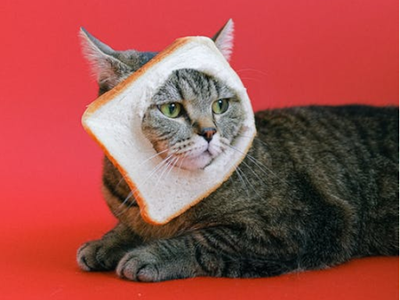
![Associated image for Best food for Ragdoll cats in the UK [Broken Down]](http://untamed.com/cdn/shop/articles/featured_best_food_for_ragdoll_cats_uk_400x300_crop_center.jpg?v=1646818249)
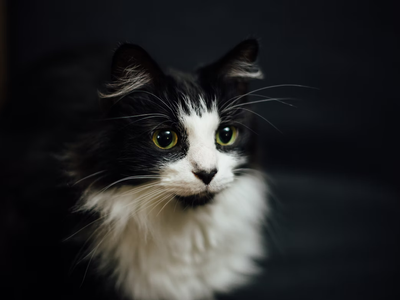
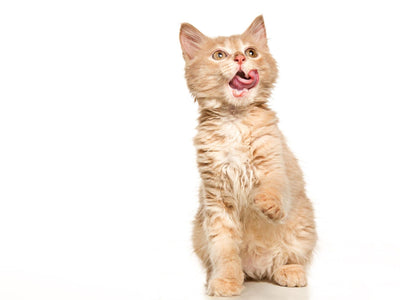

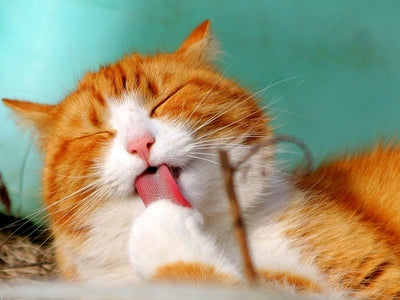
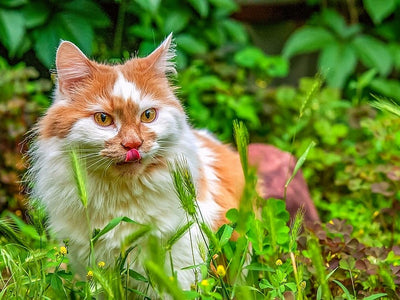

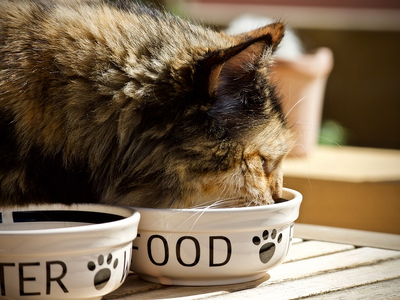
![Associated image for What human food can Sphynx cats eat? [Comprehensive list]](http://untamed.com/cdn/shop/articles/what_human_food_can_sphynx_cats_eat_Featured_400x300_crop_center.jpg?v=1648705074)

